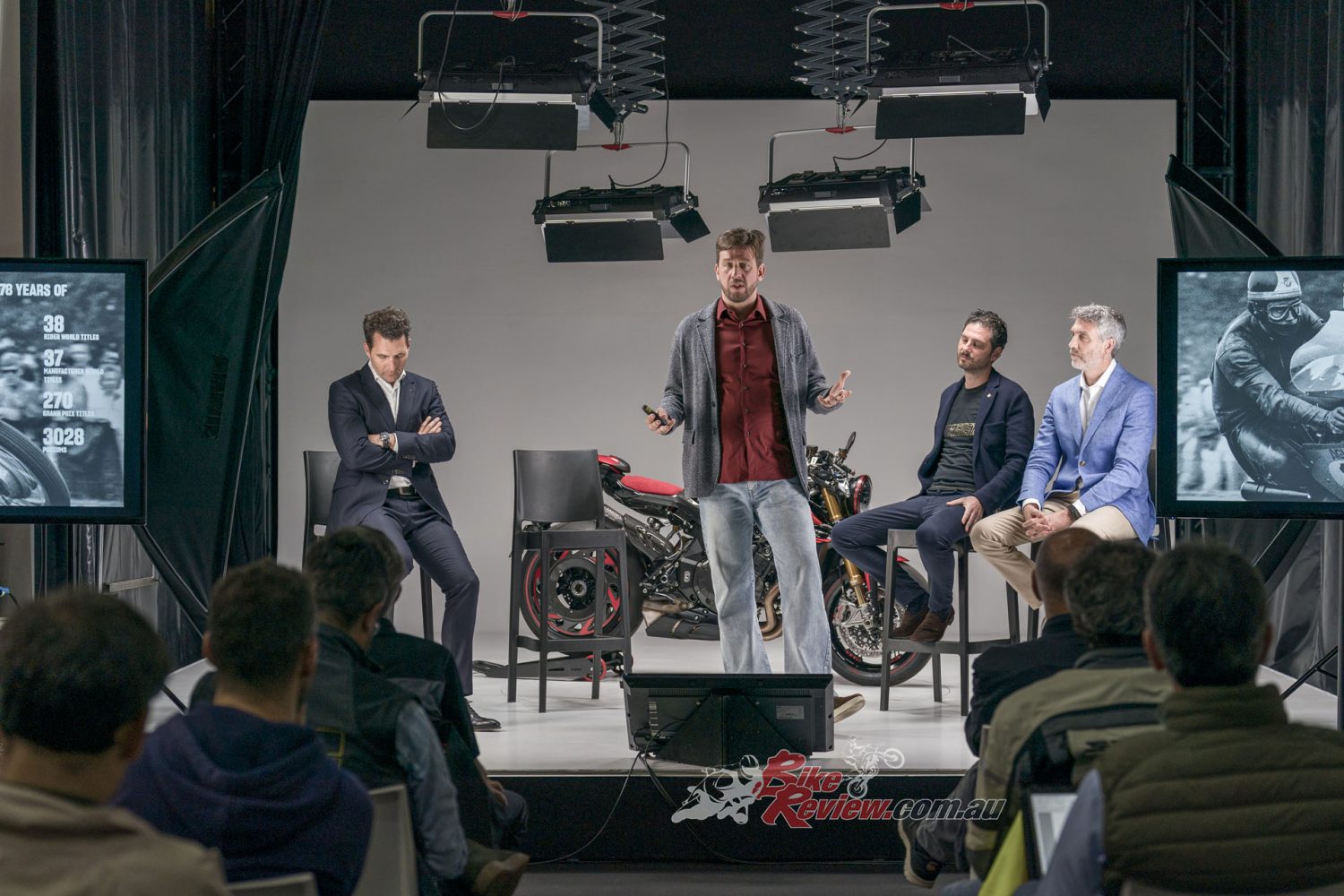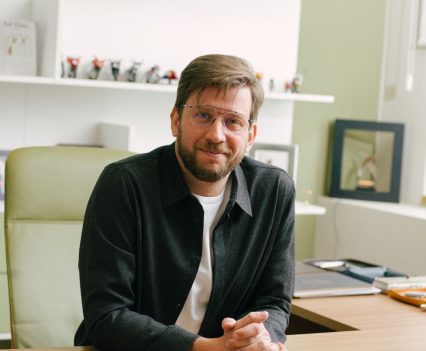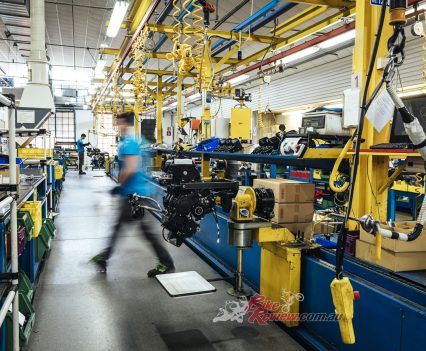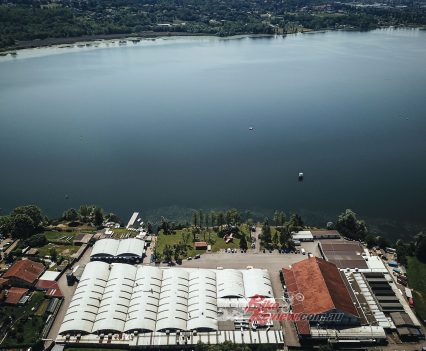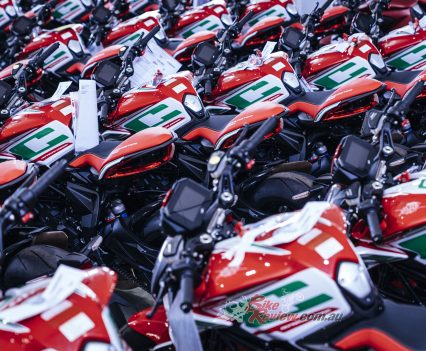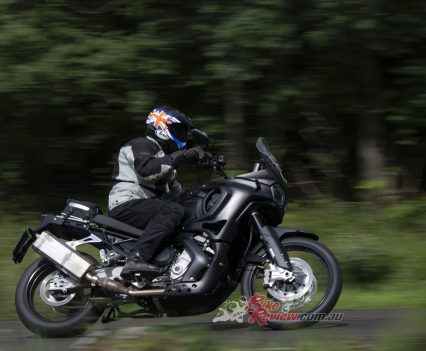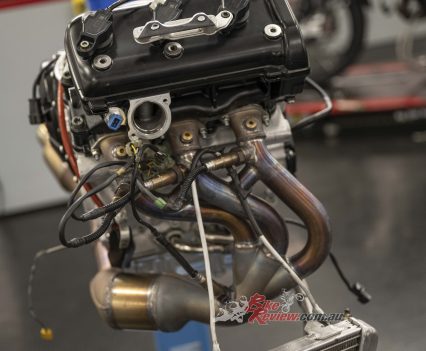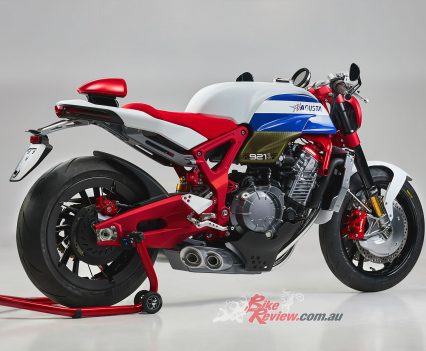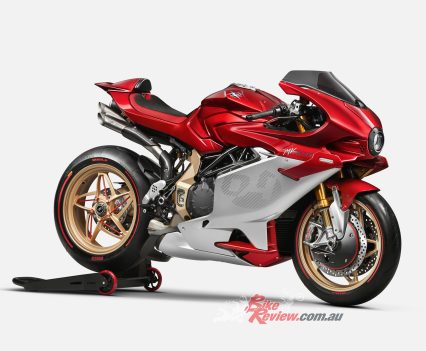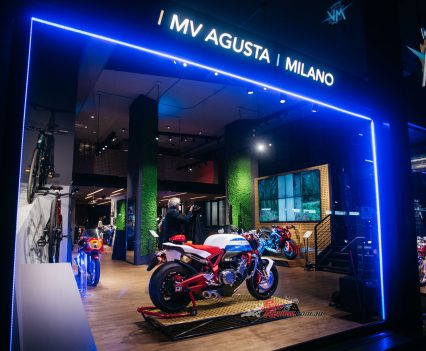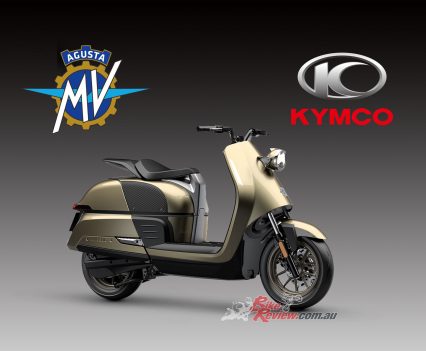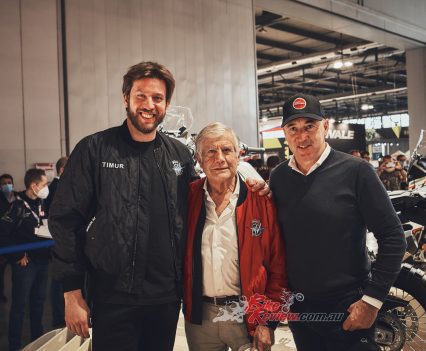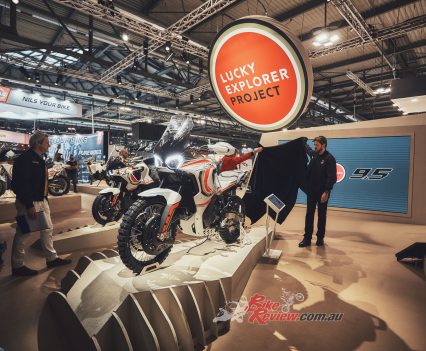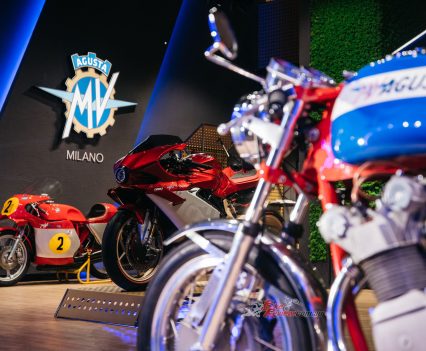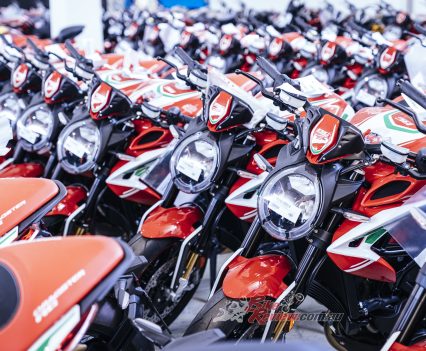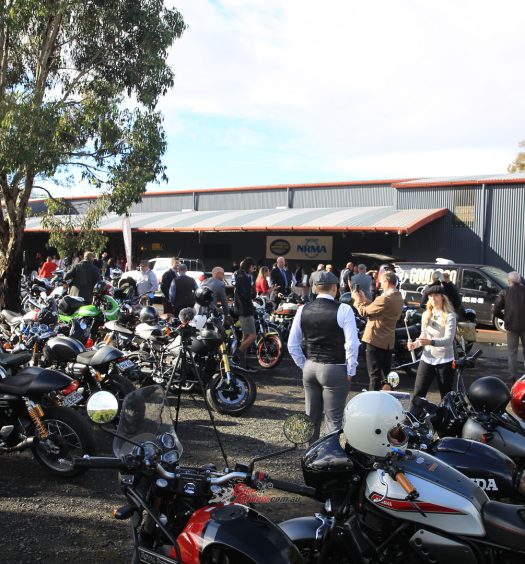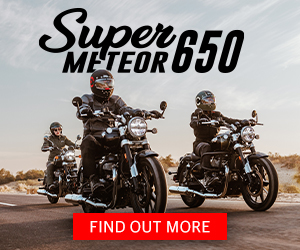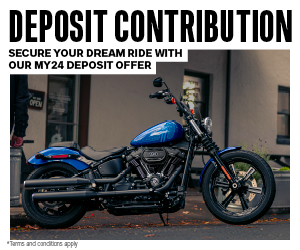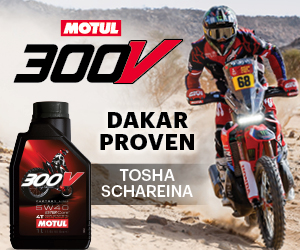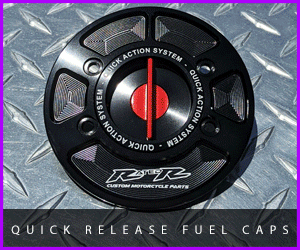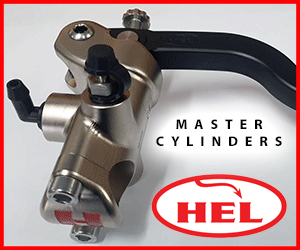It was announced that Pierer Mobility, the parent company of KTM, would take a large stake of MV Agusta. What does this all mean? Cathcart has the rundown of the situation for us...
It was a show-stopping sensation when last year on the eve of the annual EICMA Milan Show, it was revealed that MV Agusta, wholly owned since 2019 by Russian investor Timur Sardarov, sold Pierer Mobility AG – KTM’s parent company – a 25.1 per cent stake in MV.

At the 2022 EICMA Milan Show, it was revealed that MV Agusta, wholly owned since 2019 by Russian investor Timur Sardarov, sold Pierer Mobility AG – KTM’s parent company – a 25.1 per cent stake in MV.
That decimal point is all-important, because under European company law it means that Pierer Mobility is entitled to a seat on the board of MV (in fact, it has taken two), and that Sardarov cannot sell a majority equity in the company without Pierer’s approval. At the first meeting of the newly constituted MV Agusta board on November 15, a capital increase of €30million was agreed, in fact representing the sum Pierer Mobility had paid to acquire its new minority shareholding in the company.
Read Cathcart’s interview with Stefan Pierer and Timur Sardarov here…
But as always, the devil was in the detail. According to the statement announcing this acquisition, “Within the framework of this strategic partnership between the two European motorcycle manufacturers, KTM AG, a company of Pierer Mobility, will provide MV Agusta with supply chain support and take over the purchasing. Furthermore, in the course of this cooperation, MV Agusta will partly distribute its product range via Pierer Mobility’s worldwide distribution network.”

The whole situation may seem confusing to the average consumer, Cathcart has the whole rundown for us!
OK, so what does this all mean – and what are the true facts behind this? After interviewing Pierer Mobility owner Stefan Pierer earlier this year, followed by a visit to MV Agusta’s Schiranna factory on the shores of Lake Varese to speak with Timur Sardarov himself, as well as the visiting Pierer Industry CCO Florian Kecht, it seems this has all the makings of a win/win/win situation for all parties – including MV’s customers. Here’s why.
First, let’s recognise that after being reacquired by the Castiglioni family from Harley-Davidson in 2010, between 2011 and 2014 MV Agusta registered five years of significant growth, culminating in a 23 per cent year-on-year rise in deliveries in 2014, to 9,400 bikes. The company was not sufficiently well capitalised to manage such growth, it was a victim of its own success, requiring owner Giovanni Castiglioni who took control of the company after his father Claudio passed away from cancer in 2011, to borrow money to purchase components in order to manufacture bikes to meet that growing demand.
Furthermore, the company was experiencing its traditional problems with too small a global dealer network, especially in the crucial American market, and delayed parts deliveries from suppliers at a time when bigger companies were elbowing their way to the front of the line. A flirtation with luxury car maker Mercedes-AMG, which briefly held 25 per cent of MV equity in return for fattening the firm’s capital base to the tune of €30 million, didn’t resolve matters. Due to growing debts, suppliers began to refuse delivery of many components needed to build bikes. By 2016 MV Agusta was forced to call for judicial protection to avoid bankruptcy while it searched for new investment. Castiglioni had to scale back production from 9,000 bikes a year to 6,000, to reduce R&D costs from €15 million to €7 million, and to let go 200 employees.
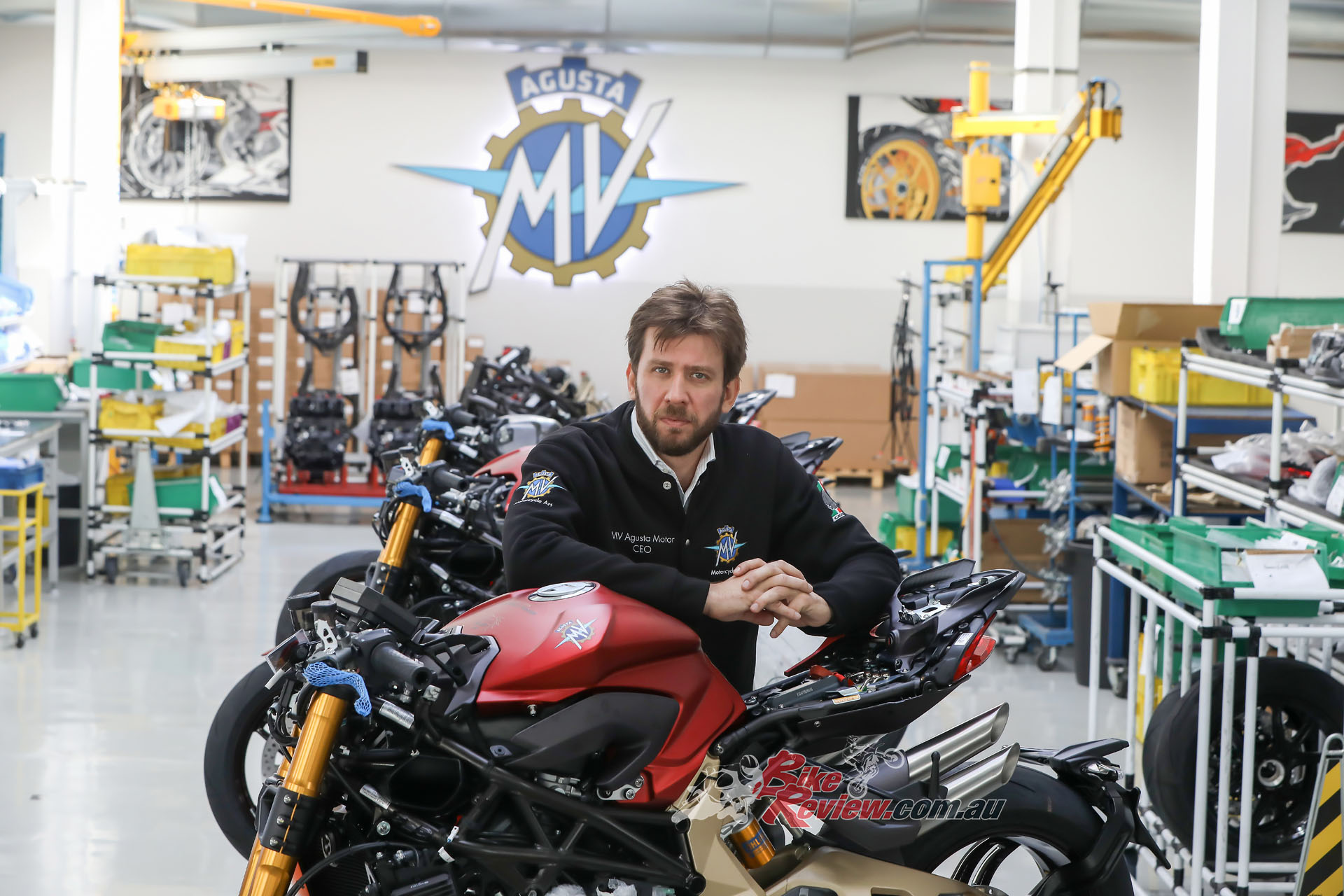
In November 2016, Timur Sardarov began making a series of investments in MV which resulted in his purchasing Mercedes-AMG’s 25 per cent in 2017, and by 2019 obtaining 100 per cent ownership of MV Agusta from Giovanni.
But in November 2016, Russian entrepreneur Timur Sardarov began making a series of investments in MV via his family’s ComSar Invest investment fund, which resulted in his purchasing Mercedes-AMG’s 25 per cent equity in November 2017, and by 2019 obtaining 100 per cent ownership of MV Agusta from Giovanni Castiglioni. Sardarov assumed hands-on control personally as CEO, and as a mark of his commitment to the cause he moved to Italy, leaving his family still living in London. In October 2019, MV presented a new five-year business plan, envisaging annual production growth up to 25,000 units in five years.
Unfortunately, this plan didn’t envisage what happened next – COVID-19. Having invested what he says is over €200 million to become sole owner of the historic manufacturer, Sardarov quickly found himself battling supply chain and distribution issues, as well as the consequences of his fellow countryman Putin’s invasion of Ukraine (which Sardarov publicly condemned in an open letter to MV staff), including surging energy costs. A brief four-week production shutdown in March 2020 helped keep the company alive, but with production stubbornly limited to just 6,000 bikes in 2022, decisive action was needed.
So, having previously inked an agreement with Pierer Mobility AG, owner of KTM, to take over MV Agusta’s distribution in North America, in November 2022 Pierer acquired that 25.1 per cent stake in MV Agusta. KTM – Europe’s largest motorcycle manufacturer, with 375,452 motorcycles built and sold in 2022, an increase of 13 per cent compared with the previous year’s 332,881 units – has thereby assumed responsibility for purchasing all the components needed to manufacture MV Agusta’s entire range of models, both now and in the future. This will allow MV to benefit from KTM’s greater clout in terms of pricing, and even more important these days, availability – it’ll henceforth be at the front of the line to obtain the electronic components, mechanical parts and other crucial stuff it needs to complete manufacture of each motorcycle, rather than have its warehouse cluttered with incomplete bikes eating up precious capital while awaiting supplies of an all-important gizmo.

KTM’s major stake in MV Agusta helped lift some of the strain felt from multiple supply issues felt from the Russian/Ukraine war and the run on from COVID-19.
But secondly, it also means that KTM will be responsible for marketing, distribution and after-sales service for MV Agusta on a global basis outside Italy, including enlisting any suitable candidates among KTM’s vast global network of 4,480 authorised dealerships to do so – over 1,300 of them dual or multi-brand dealers. It remains to be seen how many of these predominantly (but not exclusively) dirtbike focused companies will apply to sell MVs, but as a preliminary step KTM has cancelled all existing MV Agusta dealership contracts, and invited those dealers who wish to continue selling the Italian luxury brand’s products, to reapply to do so. That’s hardball!
That change in ownership means that UMI, who have been the importer of MV Agusta for nearly a decade, no longer handle the import of the Italian marque. Read more here…
So does all this mean we can look forward to bright orange MV Agustas? “Absolutely not”, says Florian Kecht. “We have huge respect and high appreciation for the MV Agusta brand, and we’re not going to destroy it by just copy and paste what we’re doing in Austria with KTM onto MV Agusta. Instead, we will continue to honour MV’s glorious heritage, as well as what has been established here at Schiranna, and what has been manufactured here. We’re going to build on our partnership.”
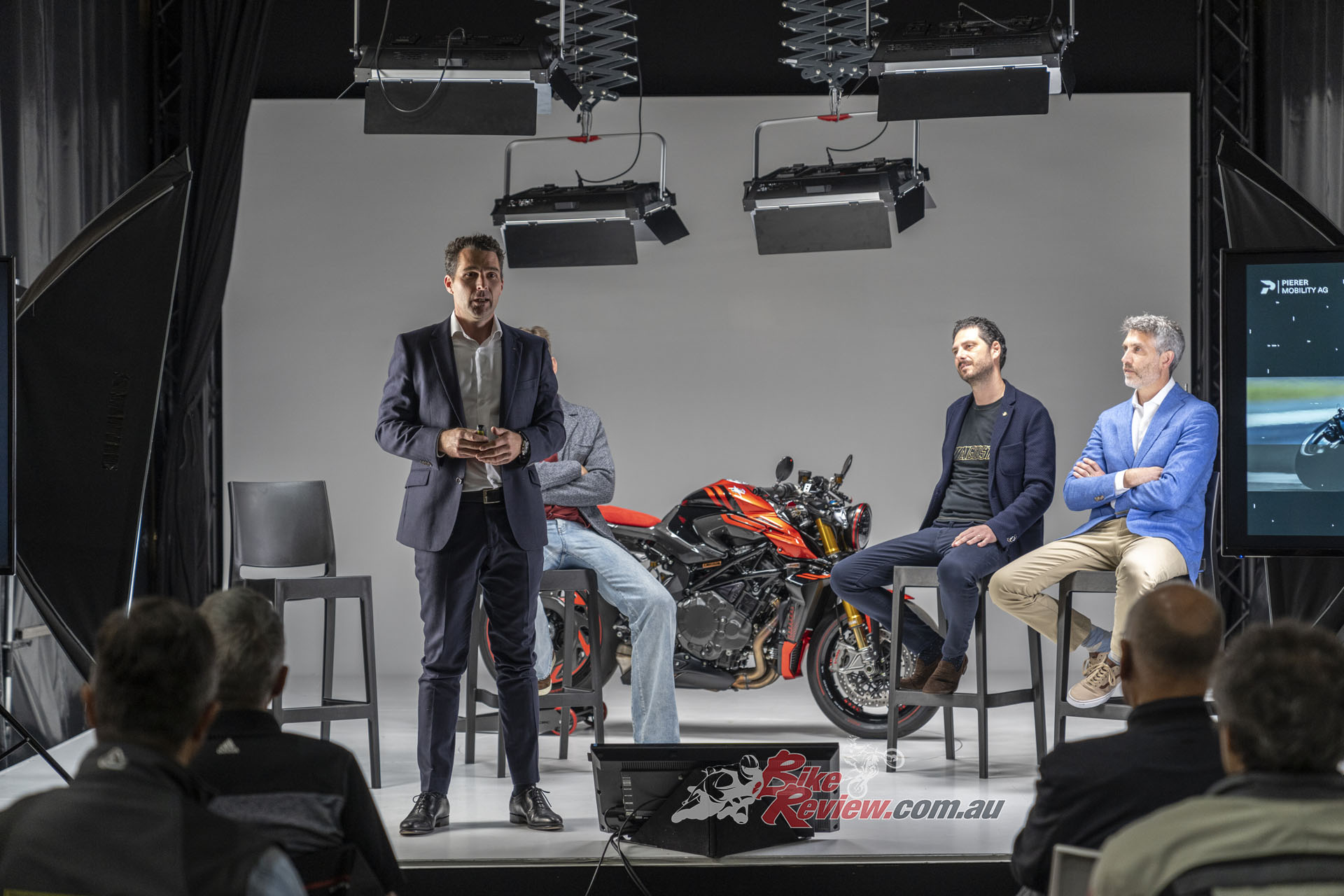
So does all this mean we can look forward to bright orange MV Agustas? “Absolutely not”, says Florian Kecht.
To address such concerns and to counter the rumour mill, MV invited a small, select group of the world’s media to its Varese HQ to explain the way forward. Sardarov, together with representatives from Pierer Mobility like Kecht and engineering boss Philipp Habsburg, wanted to emphasise that the purpose of the deal indeed is not to turn MV Agusta orange. Instead, the sounder financial and operational base it enacts will allow MV Agusta to continue being the motorcycle world’s No.1 luxury brand – but now with the financial backing and industrial heft of Pierer Mobility behind it. Indeed, Italian former Ducati executive, ex-BMW engineer and until now KTM Asia CEO Luca Martin has been appointed by Pierer as COO of MV Agusta with a seat on the board, tasked with implementing the structural alliance between the two partners.
The workforce in MV’s lakeside Schiranna factory where the Schneider Trophy winning Aer Macchi racing seaplanes were constructed in the 1920s and ‘30s presently consists of 280 people, 80 of them working on the single production line. Within that total are the 74-strong R&D team split between MV’s Varese HQ and its satellite CRC development outpost in San Marino, currently housing 40 people. That overall number will rise to 350 later this year, when a new second line presently being installed in Schiranna will come on stream, dedicated to building both three- and four-cylinder engines, with the existing line repurposed for assembly of complete bikes only.
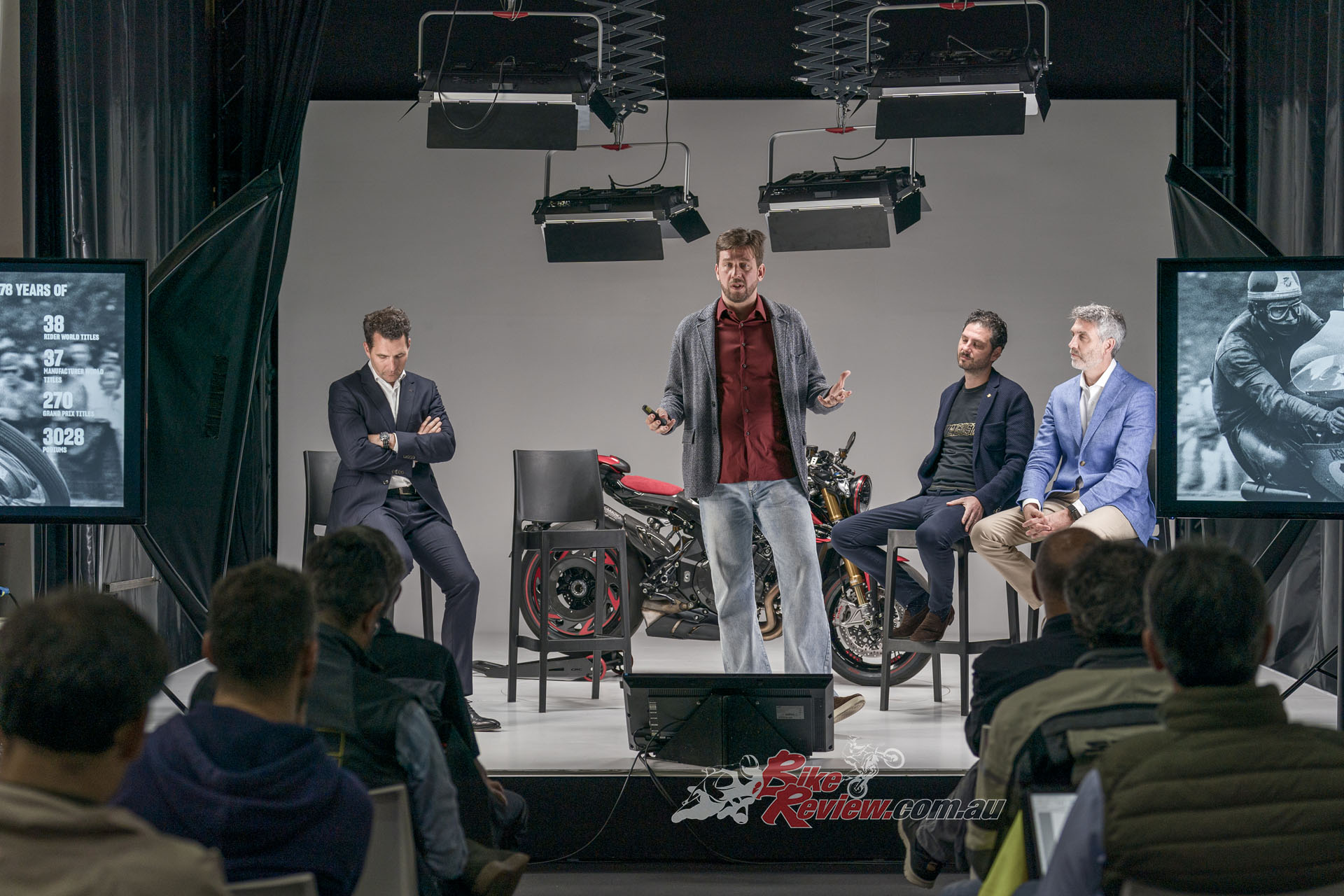
Florian Kecht (left), Timur Sardarov (speaking), Luca Martin (right) and Brian Gillen at the recent MV Agusta/KTM conference held recently at the MV Agusta Schiranna factory.
This will double the production capacity of the 130,000m² factory (with currently 20,000m² of covered space) to 15,000 bikes annually, though for the time being a short-term ceiling of 12,000 is envisaged, via a single assembly line shift of 150 workers. Furthermore, in addition to the new production line, MV Agusta’s entire Schiranna HQ will receive a comprehensive remodelling – including creating a Museum – to turn it into a more efficient, better equipped and frankly more alluring home in keeping with the brand’s prestige, as well as a destination for current and future customers to visit.
The new assembly line will come on stream in September, just in time to house production of MV Agusta’s first new-generation model under the company’s new split ownership. That’ll be the Motorcycle Formerly Known As The Lucky Explorer 9.5, now rechristened the MV Agusta LXP and painted red and silver, not the pastiche of the Cagiva Elefant Lucky Strike livery it’s appeared in up till now, as launched at the 2021 EICMA Milan Show.
Despite doubts over the brand’s future in the segment, after KTM boss Stefan Pierer made it clear he doesn’t think it’s a market MV should be aiming at just yet, if at all, it’s confirmed that the model will indeed enter production this September in Varese, powered by the all-new 931cc three-cylinder engine that’s been under development for the past three years. Presumably too much development budget has already been spent on it to make cancelling the product viable on grounds of cost.
The model has already been type approved in Australia, with homologated peak power of 91kW@10,000rpm from the firm’s new three-cylinder motor. Kerb weight is listed at 230kg including all fluids, with the wheelbase recorded at 1610mm for the Aussie type-approval. Three different versions will apparently be offered, topped by an LXP Orioli commemorating Edi Orioli’s twin Paris-Dakar rally victories in 1990 and 1994 on the original Lucky Strike-sponsored Cagiva Elefant.
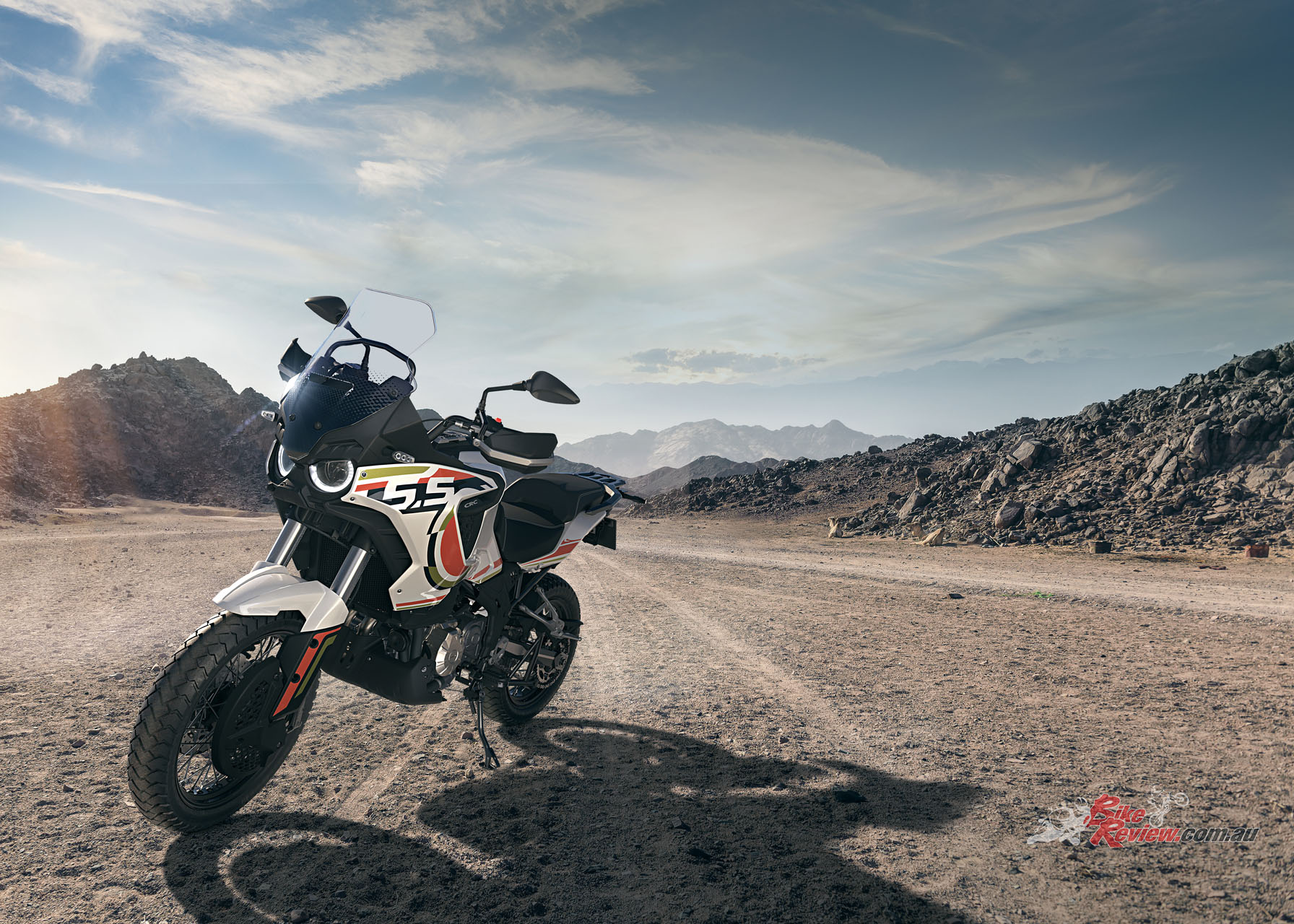
The smaller twin-cylinder Lucky Explorer 5.5 model that Sardarov originally planned to have built in China as an entry-level model to the MV Agusta adventure range has been parked in the freezer and won’t enter production.
However, the smaller twin-cylinder Lucky Explorer 5.5 model that Sardarov originally planned to have built in China as an entry-level model to the MV Agusta adventure range, which was essentially a revamped QJMotor SRT550 and a close cousin of the Italian sales chart-topping Benelli TRK502, has been parked in the freezer and won’t enter production. That’s because it goes against the wishes of Pierer, who believes MV in future should only be manufacturing larger-capacity models over 900cc in capacity, exclusively built in Italy.
Read more about the LXP here…
The smaller LXP model is thus dead in the water, but work on the other hand is already well under way on the next generation Brutale and Turismo Veloce families of bikes using the same three-cylinder engine as the MV LXP, but in a variety of capacities and tunes from 900cc upwards, and with an evolved version of the Rekluse clutch on the TV models. These are expected to debut in 2025.
Before then, the exquisite new four-cylinder Superveloce 1000 unveiled last November by MV Agusta GP legend Giacomo Agostini at the MV Agusta Milano dealership owned by Sardarov at an after-hours EICMA Show party, will enter production this coming September in limited-edition 300-off Serie Oro form, before the volume production version follows later next year. This is powered by a retuned version of the same essentially all-new 998cc four-cylinder engine which debuted a year ago in the Brutale RR, but the other new model announced beside it, the retro-styled 921S, will have a new 115bhp 921cc inline four-cylinder motor when it enters production as a 2025 model.
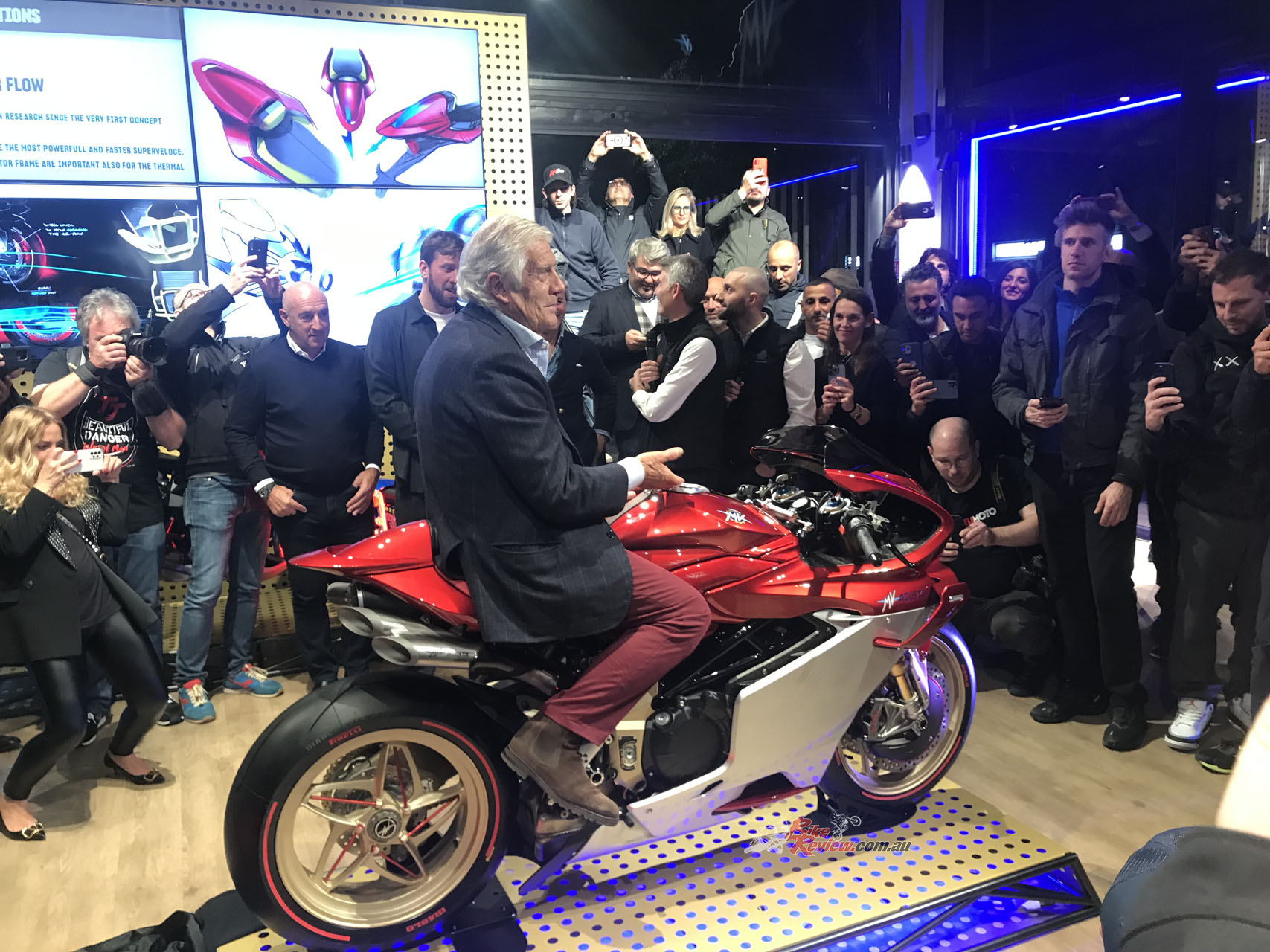
The exquisite new four-cylinder Superveloce 1000 unveiled last November by MV Agusta GP legend Giacomo Agostini will enter production this coming September in limited-edition 300-off Serie Oro form.
However, though no official announcement has been made, it looks like the end of the road for the Ampelio electric scooter jointly developed in collaboration with Taiwanese company Kymco, with was unveiled at EICMA last year. Such a vehicle is very definitely not on Stefan Pierer’s approval list for future MV Agusta models! But both Kecht and Sardarov went to great lengths to impress that the unique lustre, the innovative Italian design and the sheer beauty of MV Agusta motorcycles will all be pursued relentlessly under Pierer Mobility’s partnership. MV Agustas will continue to be designed and created at CRC in Italy, and their development and manufacture will remain in Schiranna.
For reasons already stated, under previous ownership these future new models would have run the risk of being late to market, but with KTM’s support we can look forward to them entering dealerships around the world bang on time. And that’s a key element on Pierer Mobility’s plans for MV. Florian Kecht emphasises that everything they do is aimed at benefitting their dealer network, which they view as a cornerstone of MV Agusta’s success.
“Florian Kecht emphasises that everything they do is aimed at benefitting their dealer network, which they view as a cornerstone of MV Agusta’s success.”
“Our entire sales strategy is based on and around the dealer, and our partnership with our dealers,” he declares. “We want to establish a global network of about 180 dealers able to provide MV customers with a qualitative retail experience. We believe it’s worth spending the time now to find the right business partners with a mindset that’s capable of dealing with a luxury brand like MV Agusta, rather than just taking KTM dealers and putting MV Agusta inside their stores, which would be a big mistake.”
That target number of future MV dealers globally may seem conservative, given the emphasis on finally getting MV moving in North America, where the all-consuming challenge for MV Agusta is trust. Americans have been hesitant to buy an MV because of the distance to the nearest dealership. Will 180 such outlets around the entire globe leave sufficient of them to cover the USA in addressing that problem? Kecht envisages 25 per cent of MV Agusta’s future sales coming from North and South America combined, 65 per cent from Europe and Africa, and 10 per cent from Asia and Australasia.
That last figure seems at odds with the huge volume of Aston Martin AMB 001 sales which have ended up in mainland Asia, but Pierer Mobility will surely have done its homework on this. And for sure, servicing and after-sales support – traditionally the Achilles heel of prestige Italian motorcycle ownership – is a key issue for those considering buying an expensive luxury motorcycle. Kecht insists that MV Agusta owners will be able to count on receiving all the necessary dealer backup they need in purchasing their own personal two-wheeled work of art. And that’s exactly what they will be, he says, as KTM seeks to restore and build on the Motorcycle Art epithet used to describe the company’s exquisite-looking motorcycles for the past two decades.
“The one aspect that’s new for us after working with our other brands is that any MV Agusta is not just a motorcycle, it’s a piece of art,” he says. “I’m always telling my sales guys, we’re not selling units, we’re selling motorcycles – we’re all passionate about motorcycles, so let’s not talk about units, because that somehow gives a lower value to what we’re actually doing. But now when we talk about MV Agustas, we should not be talking about motorcycles, we should be talking about pieces of art. So every month from now on, we will have sales reports that show how many pieces of art we have sold, not how many units, and not how many motorcycles. This is the new learning curve for our company, because we know how to deal with premium brands, but MV Agusta is a different ball game, even for us. But it’s a ball game that everyone in the company is really excited about, but also respectful of in terms of it being a new challenge for us, because it’s a truly luxury brand which forms the crown jewel in our company’s portfolio. Personally, I’m looking forward to finally getting my Superveloce very soon – and by the way, I sold my Husqvarna to get it!”
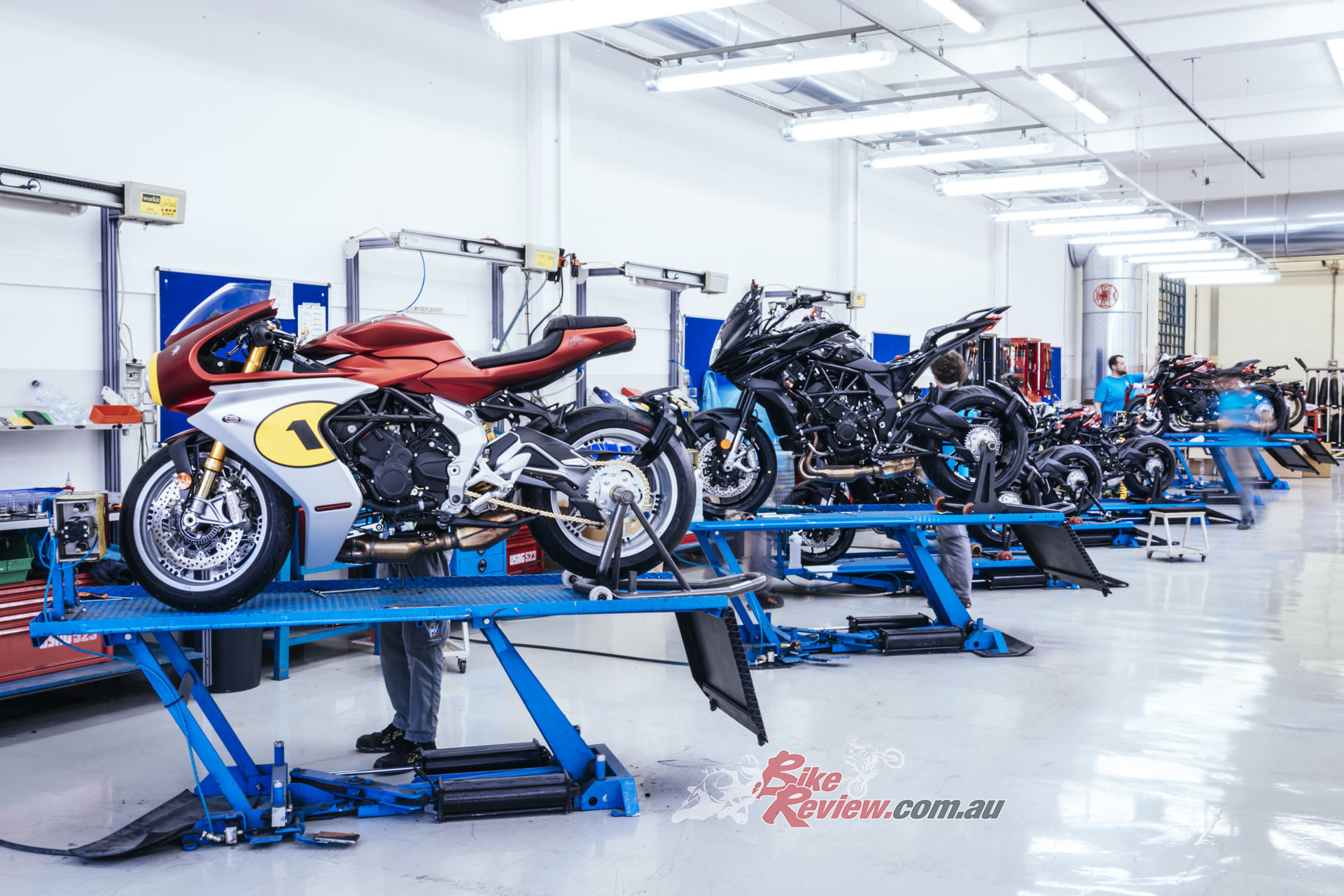
“The one aspect that’s new for us after working with our other brands is that any MV Agusta is not just a motorcycle, it’s a piece of art,” says Kecht
But despite these declarations, the big question still remains: can MV Agusta, owned and run by a Russian entrepreneur with the help and support of an Austrian motorcycle conglomerate, retain its Italian flair and design charisma, while achieving the profitability and security it has never yet enjoyed so far in any of its 78 years in existence? If ever there was a company with a reasonable chance of making this venture succeed, it’s Pierer Mobility. Now let’s watch them try – and get ready to enjoy the fruits of their success in doing so, should they succeed.
Editor’s Note: If you are reading this article on any website other than BikeReview.com.au, please report it to BikeReview via our contact page, as it has been stolen or re-published without authority.


